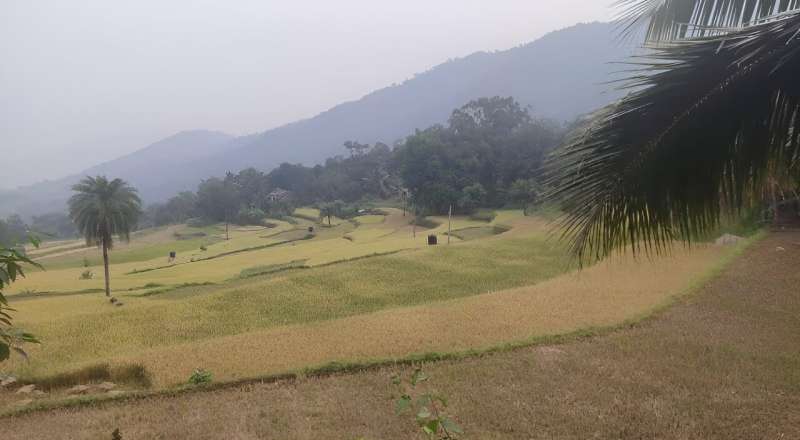This article has been reviewed according to Science X's editorial process and policies. Editors have highlighted the following attributes while ensuring the content's credibility:
fact-checked
peer-reviewed publication
proofread
Women's empowerment associated with fewer underweight children in vulnerable Indian communities

The forested hills and rolling fields in the state of Odisha are home to some of India's most vulnerable tribal groups, but a new study from researchers of the Alliance of Bioversity International and CIAT shows that when women are empowered, children are less likely to be underweight.
In 2020, 828 million people globally went hungry and almost 3.1 billion people could not afford a healthy diet, according to World Health Organization (WHO) statistics and India continues to struggle with food security, malnutrition, and rising levels of anemia among women and children, especially in rural and indigenous areas like Odisha state.
In recent years, there have been a growing number of studies about how women's empowerment—equipping women with the ability to make strategic life choices and access to resources—might help fight hunger, but there has been limited field evidence of their effects on food security, dietary quality, and childhood outcomes.
In the article "Women's empowerment, household dietary diversity, and child anthropometry among vulnerable populations in Odisha, India" published in the journal PLOS ONE, researchers from the Alliance of Bioversity International and CIAT used the Women's Empowerment in Agriculture Index (WEAI) to measure the empowerment of women in 1,900 farm households located in 12 districts in the state of Odisha, India.
Sylvester Ogutu, a researcher for the Alliance of Bioversity International and CIAT and the paper's lead author, explains that by using this score and then comparing it to outcomes like the number of different foods found in the household and the weight of children for their age, a clear picture emerged.
"As primary care-givers, the empowerment of women contributes to improved child nutrition, health, and education," he says, "Women's empowerment in agricultural input use, sales, income, and other (access to credit, group membership and employment) decision-making domains was associated with fewer underweight and wasted children."
Food diversity and better outcomes for children
Jonathan Mockshell, an agricultural economist at the Alliance of Bioversity International and CIAT, study lead, and a co-author of the paper says that in terms of the effects of women's empowerment on the household dietary diversity score (HDDS)—a snapshot of the economic ability of a household to access a variety of foods dietary diversity—the study found women's empowerment contributes to improved food production and dietary diversity.
"The magnitude of the effect of women's empowerment on dietary diversity was relatively small, which suggests that complementary interventions may be required to achieve higher household dietary diversity," he says.
The researchers also measured the height and weight of children and discovered that women's empowerment significantly increased children's weight-for-age z-scores (WAZ), and weight-for-height z-scores (WHZ), but not their height-for-age scores (HAZ).
"The improvements in the z-scores contributed to reduced prevalence of underweight and wasting in children with mother's with a higher empowerment score," Mockshell says.
The future
Ogutu explains that the study's new evidence of the effects of women's empowerment on dietary diversity and child anthropometry among the vulnerable populations groups in India is crucial.
"However, the number of respondents for our data on child physical measurements like weight and height was relatively small," he says.
Mockshell says that future studies could provide additional insights by examining the effects of women's empowerment on child anthropometry using larger datasets.
"We'd also like to look at other vulnerable population groups in other geographical areas across the Global South to see if we can find similar trends," he says.
This work builds on previous work by the authors on improving the lives of farmers in Odisha. In a 2023 paper, "Home gardens, household nutrition and income in rural farm households in Odisha, India," published in the Journal of Agricultural Economics," the researchers produced solid evidence that home gardens can improve food security, dietary quality, and income in these rural farming communities.
This latest paper is part of a wider push at the Alliance of Bioversity International and CIAT, and the One CGIAR Initiative on National Policies and Strategies to generate evidence-based insights to support policy decisions on the role of women in agriculture.
In February 2024, researchers conducted a survey of over 1500 smallholder farming households from the Sedhiou and Tambacounda regions in southern Senegal, with 70% of respondents being women over 35, with the aim of empowering the women who make up almost 70% of Senegal's agricultural workforce.
More information: Sylvester Ogutu et al, Women's empowerment, household dietary diversity, and child anthropometry among vulnerable populations in Odisha, India, PLOS ONE (2024). DOI: 10.1371/journal.pone.0305204





















